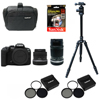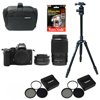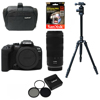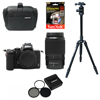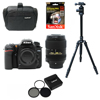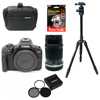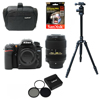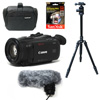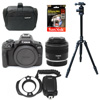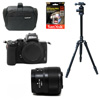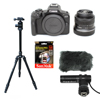Beginner's Guide to Photography
Photography is both an art and a science. Whether you're capturing stunning landscapes or recording life through vlogs, this guide will help you build a solid foundation.
1. Understanding the Basics
1.1 The Exposure Triangle
- Aperture: Controls depth of field and light.
- Shutter Speed: Affects motion blur or freeze.
- ISO: Determines sensitivity to light.
1.2 Composition Principles
- Rule of thirds
- Leading lines
- Framing
- Symmetry and patterns
1.3 Essential Gear
- Camera body (DSLR, mirrorless, or compact)
- Lenses (wide-angle, telephoto, prime)
- Tripod
- SD cards and storage
2. Landscape Photography
2.1 Key Gear
- Wide-angle lens
- Tripod
- Polarizing filter
2.2 Techniques
- Shoot during golden hour
- Use a small aperture (e.g., f/11 to f/16) for sharpness
- Focus 1/3 into the scene for maximum depth of field
2.3 Tips
- Scout locations in advance
- Watch weather conditions
- Shoot in RAW for better editing flexibility
3. Wildlife Photography
3.1 Key Gear
- Telephoto lens (e.g., 300mm or more)
- Fast shutter speed
- Silent shutter (if available)
3.2 Techniques
- Be patient and quiet
- Use burst mode to capture action
- Track animals' routines for better timing
3.3 Tips
- Learn animal behavior
- Use camouflage or blinds
- Respect nature and ethical guidelines
4. Sports Photography
4.1 Key Gear
- Fast telephoto lens (e.g., 70-200mm f/2.8)
- High-speed camera with fast autofocus
4.2 Techniques
- Use fast shutter speeds (e.g., 1/1000 sec or faster)
- Track subjects with continuous autofocus (AI Servo/AF-C)
- Anticipate the action
4.3 Tips
- Know the sport rules
- Position yourself at key action points
- Use burst mode
5. Filmmaking
5.1 Key Gear
- Mirrorless/DSLR or cinema camera
- Stabilizer or gimbal
- Microphone and audio recorder
5.2 Techniques
- Use manual settings for full control
- Compose cinematic shots (rule of thirds, depth)
- Edit using software like Adobe Premiere Pro or DaVinci Resolve
5.3 Tips
- Plan your shots with storyboards
- Record clean audio
- Practice smooth camera movements
6. Macro Photography
6.1 Key Gear
- Macro lens (1:1 magnification)
- Tripod and remote shutter
- Ring light or diffused flash
6.2 Techniques
- Use manual focus for precision
- Small apertures (f/8 to f/16) for better depth
- Stabilize your setup to avoid blur
6.3 Tips
- Focus on the eyes for insects
- Use a background that complements your subject
- Explore flowers, textures, and small objects
7. Vlogging
7.1 Key Gear
- Compact or mirrorless camera with flip screen
- External microphone
- Mini tripod or grip
7.2 Techniques
- Talk clearly and directly to the camera
- Use jump cuts and overlays for engagement
- Shoot in good lighting (natural or ring light)
7.3 Tips
- Be authentic and consistent
- Plan your content
- Engage with your audience in comments

 Beginner Guide
Beginner Guide
